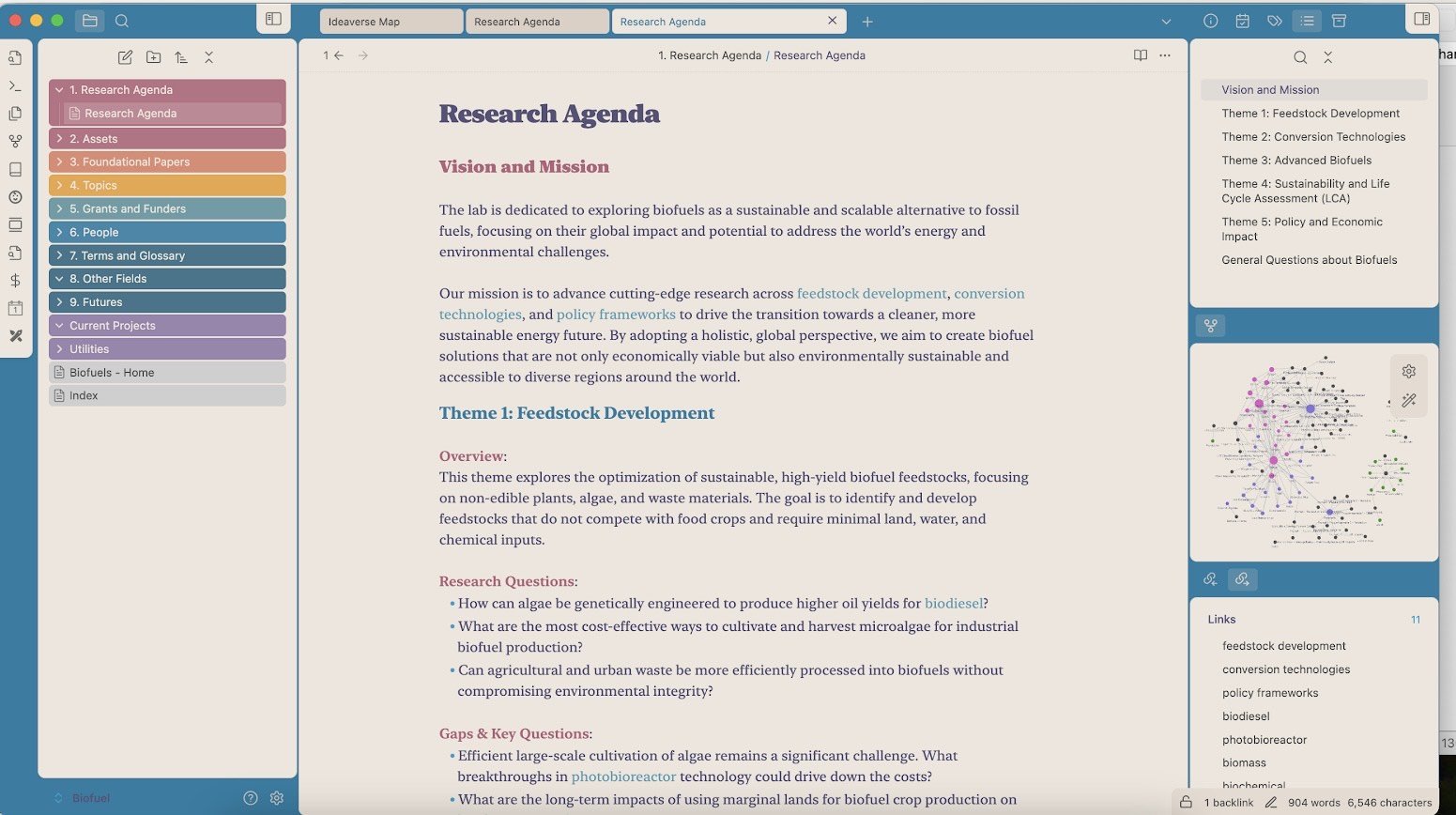PKM Reimagined: Exploring Theme-Based Knowledge Systems
I love the concept of a digital Zettelkasten —a system that connects notes and ideas from things you read, listen to, or otherwise encounter. Also: add in notes from various projects, meetings, and personal reflections. Philosophically, it's a beautiful ecosystem where you can trace an idea that pops up during a random conversation to a book you're reading, and then to an essay that's been sitting on the back burner. Idea stacking and accrual.
When you bring this thoughtful alertness to your world of information, these seemingly serendipitous layers begin to emerge. I fully believe that Personal Knowledge Management (PKM) can propel our output while also sharpening our thinking and creativity.
I’ve written about this in a previous blog post: peek into my PKM
An Evolving Approach
Lately, I find myself shifting in a new direction. I use Obsidian as my notetaking (and sensemaking) platform. Right now, I have nearly 2,700 discrete, interconnected notes:
Graph View of my current Obsidian vault with 2,881 separate notes
But I’ve realized I don’t use much of my content. It’s like having a large house but only spending time in one room. And while that’s fine and it still works, I feel I’ve been tied to the idea of having “one vault” or mashing everything together into one system in hopes that new insights would emerge. I still believe that’s possible, but it’s no longer my primary use case.
The main things I use Obsidian for are projects and meetings—more so for drafting and capturing thoughts and work-in-progress rather than managing tasks or deadlines. It’s a workspace for designing, writing, planning, and thinking. It also helps me to keep the various things I’m involved with on top of mind.
I’m considering shifting to a quarterly or semester-based approach. Each term is different for me—the seasons change, my goals and initiatives evolve, and my mood and mindset shift. So why not adjust my PKM to reflect that? If my notes aren’t necessarily building on each other but are instead helping me assemble agendas, talking points, and outputs that are often time-bound (e.g., semester-based), why not change things up? I’m thinking in terms of a more lightweight solution rather than a massive dataset of notes.
This would also give me a chance to experiment with new visual themes, plug-ins, and ways to structure my information. It’s less about developing a “perfect system” and more about continually iterating and consciously testing approaches to strengthen my overall knowledge practices.
Themed Vaults: A Focus on Action
I’ve also been thinking about creating separate, thematic vaults. For example, I could have one for AI, academic freedom, or climate change—each with a very action-oriented interface and unique knowledge base to help develop my thoughts, talks, and writings.
In the “one system” model, all of these topics would mesh together, and there’s definitely value in that. But I’m increasingly becoming more fascinated with the idea of a separate, specialized digital environments. These would be similar to different rooms in a house, each designed for specific needs. Or rather, perhaps like a collection of tiny houses? The way these different spaces are arranged, aesthetically and functionally, would influence mood, thinking, and actions.
A Proof of Concept: Team Science Vault
I’ve also been experimenting with this idea from a team science perspective. I’m developing an interdisciplinary collaborative knowledge base around biofuels as a proof of concept. As I talk with people in labs, centers, and institutes about their workflows and information practices, it’s helpful to have something I can demo when discussing linked notes and modern knowledge systems. This is all very abstract and so it helps to invite them into a well-crafted protoype.
Here’s a preview:
My work-in-progress biofuel PKM for researchers.
This experimentation is helping me refine and expand my thoughts about PKMs—how they can be designed for particular audiences and needs, as opposed to a one-size-fits-all system. We’ll see where it leads, but I’m gravitating toward a PKM archipelago.
There’s an artistry in shaping the digital environment to match the intention of each space—whether it’s for deep research, quick project notes, or reflective thinking. By crafting distinct knowledge islands, I’m embracing the flexibility and creativity that comes with designing multiple, purpose-driven systems.

